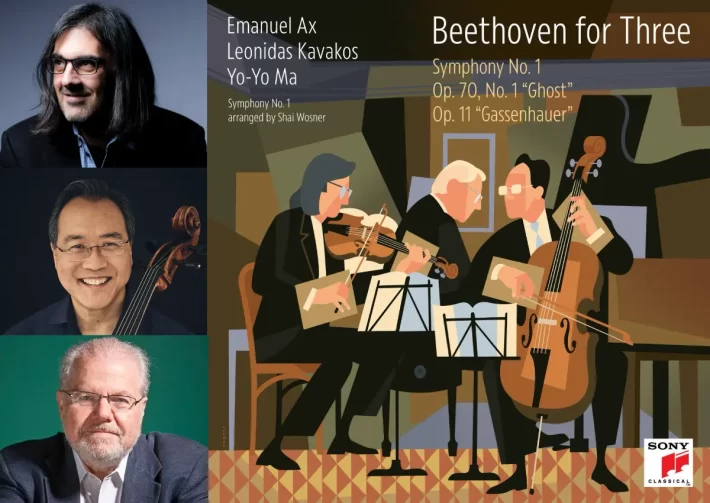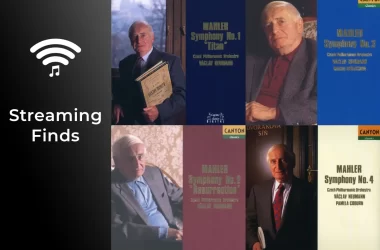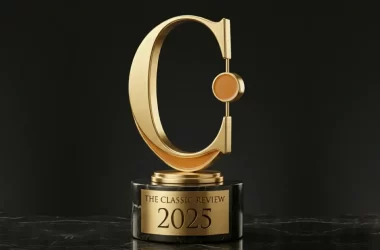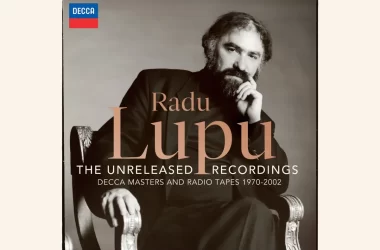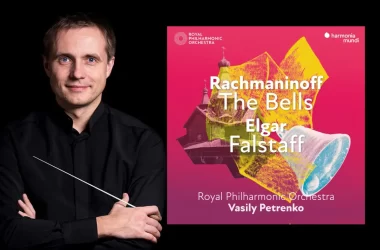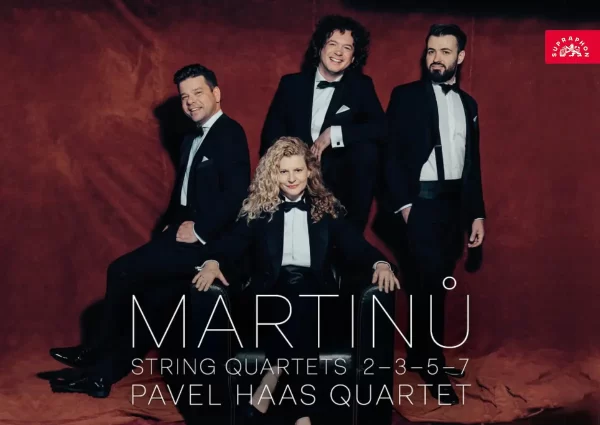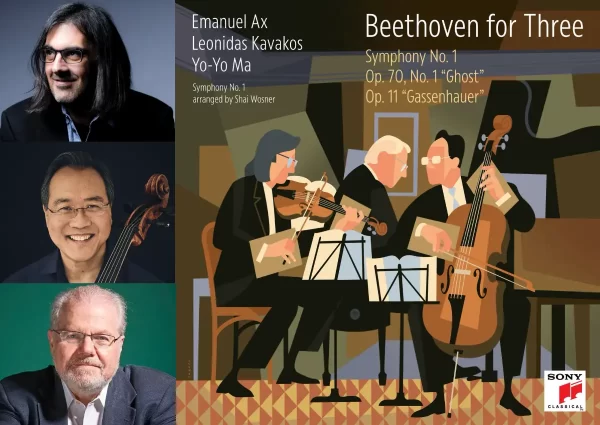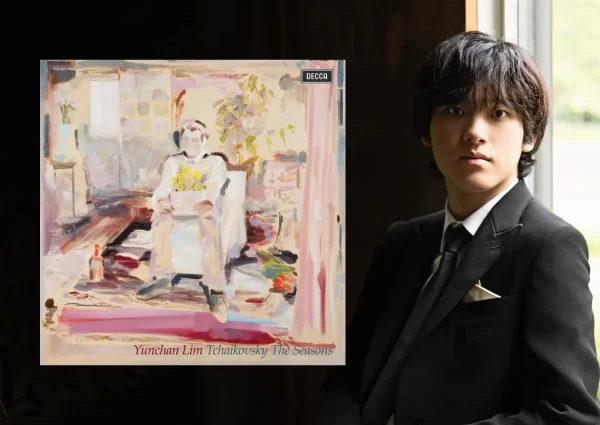This is the fourth album in the ‘Beethoven for Three’ series. Each album, in addition to standard trio works, has featured a Beethoven symphony transcription by Shai Wosner (the initial release consists of Wosner’s transcriptions of the second and fifth symphonies). This latest album opens with his version of the first symphony, which I approached with trepidation. How can a trio abrupt passions and vivid colors of Beethoven’s original?
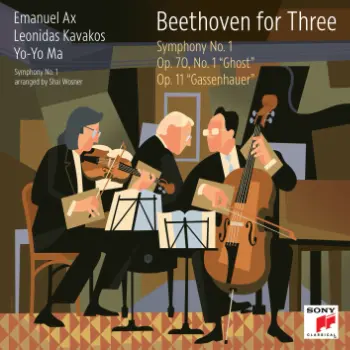
The first movement’s slow introduction quickly made clear that the transcription is not necessarily generating the same atmospheres and emotions, Instead, its simpler textures and gentler coloring draws out a lyricism and sweetness rarely exposed in a full orchestral performance (especially more recent ones that reflect historically informed performance practice). This is, at least in part, because tempos are slower than Beethoven’s speedy metronome markings.
The sense of give and take between the three players is another factor. Ax obviously carries the harmonic argument, but his nimble passagework and carefully weighted chording never drowns out his partners. Here the second movement becomes a delicate dance, followed by a Minuet rejecting the ferocity of many modern performances for something far more charming and playful. The final movement’s humor is less caustic, closer to Haydn’s gentle wit. The performance offers a different prism through which to view this familiar music.
Of course, the transcription has little if any recorded competition; that is certainly not the case with the fifth piano trio, nicknamed the ‘Ghost’ (after Carl Czerny’s assertion that the second movement’s eerie atmosphere might is meant to portray when the ghost of Hamlet’s father visits his son in Shakespeare’s play). Here the second movement’s ghostly atmosphere is tellingly conveyed in playing of hushed intensity. Ma and Kavakos employ a thoughtful and sensitive approach to vibrato. The outer movements have a dramatic fervency that fully captures Beethoven’s mercurial changes in mood.
Comparing this reading, the Ashkenazy, Harrell, and Perlman performance (Warner Classics) feels unsubtle, more business-like, missing some of the music’s deeper emotions. Barenboim, du Pré, Zukerman (also Warner Classics) probe for emotion at all costs, leading to moments of uncoordinated playing. The engineering for both recordings does not match what Sony offers here.
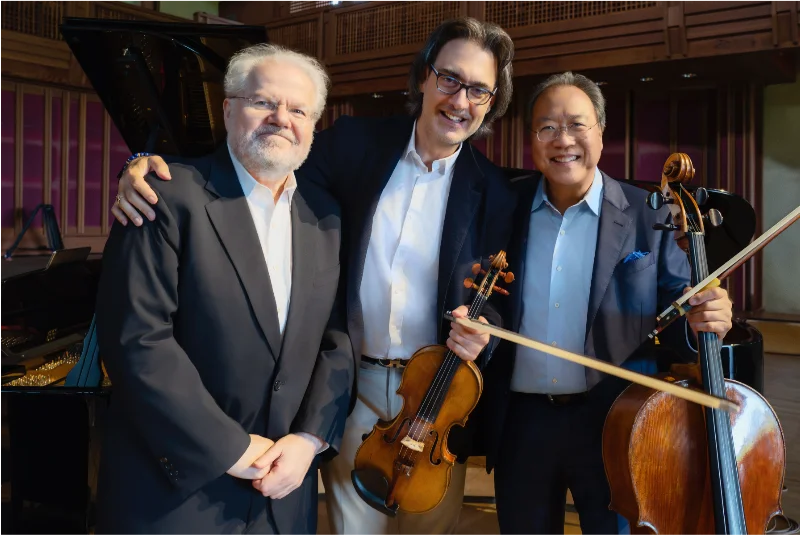
Emanuel Ax, Leonidas Kavakos, Yo-Yo Ma (©️ Andrej Grilc)
The program ends with the ‘Gassenhauer’ Trio, though its original version is for clarinet, cello and piano. Indeed, one of my favorite recordings of that original is by Ax and Ma with clarinetist Richard Stoltzman (Sony). I would have stated a preference for that instrumentation before hearing this performance, in which Kavakos’s variety of color and articulation was a constant pleasure.
The final movement, a series of variations built on the most banal of themes, is yet another example of how the composer can take the most unpromising material and shape it into something masterful, especially when played with such vivid characterization and the effortless virtuosity on display here.
I thoroughly enjoyed this well-filled (78 minutes) recording. Fans of these players will need no recommendation from me, but I would urge everyone to hear this symphony transcription. I still cannot imagine the transcription of Symphonies Nos. 5 and 6 being as successful, let alone the mighty ninth, but for the first symphony it really works.
If other recordings feature musicians that work harder to create more individual interpretations (Beethoven Trio Bonn’s album of the Ghost Trio on Avi for instance), I suppose that is expected of musicians seeking to establish themselves in an overly crowded market. But Ax, Kavakos and Ma have no need to prove anything, and there is abundant energy and enthusiasm in these readings. Their chemistry contributes to readings of intimacy, passion, geniality, and immense enjoyment.
Recommended Comparisons
Perlman, Harell, Ashkenazy | Zukerman, du Pré, Barenboim | Beaux Arts
Top images credits: © Jason Bell (Ma), © Marco Borggreve (Kavakos), © Nigel Parry (Ax)

Album Details |
|
|---|---|
| Album name | Beethoven for Three: Symphony No. 1 / Op. 70, No. 1 ‘Ghost’ / Op. 11 ‘Gassenhauer’ |
| Label | Sony Classical |
| Catalogue No. | G010005464289W |
| Artists | Yo-Yo Ma (cello), Leonidas Kavakos (violin), Emanuel Ax (piano) |
Available on Presto Music
Included with an Apple Music subscription:
Latest Classical Music Posts

